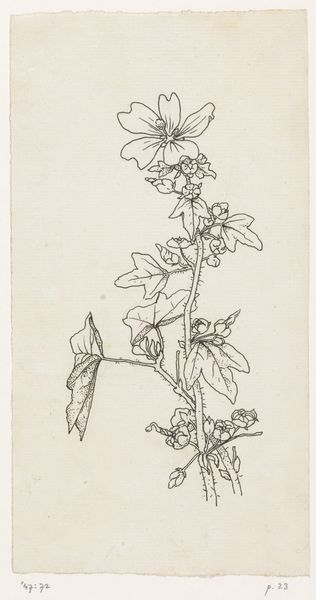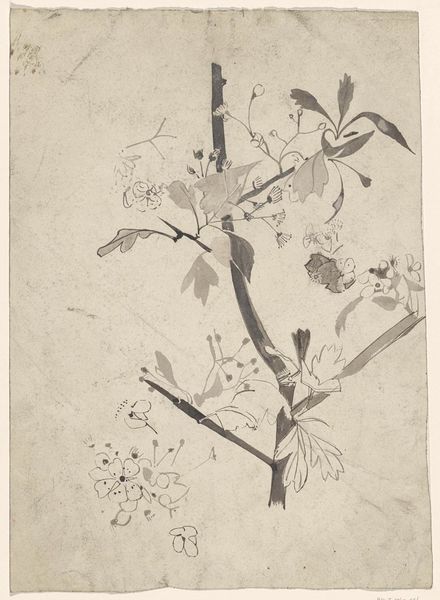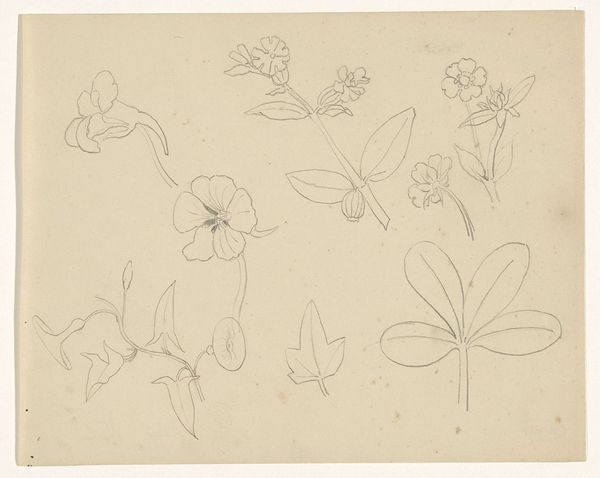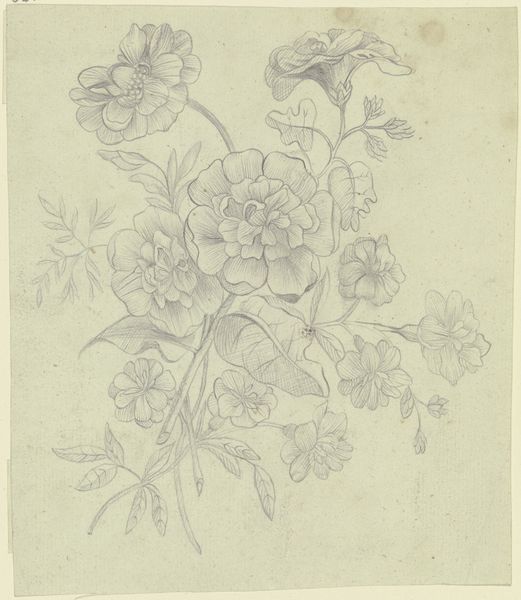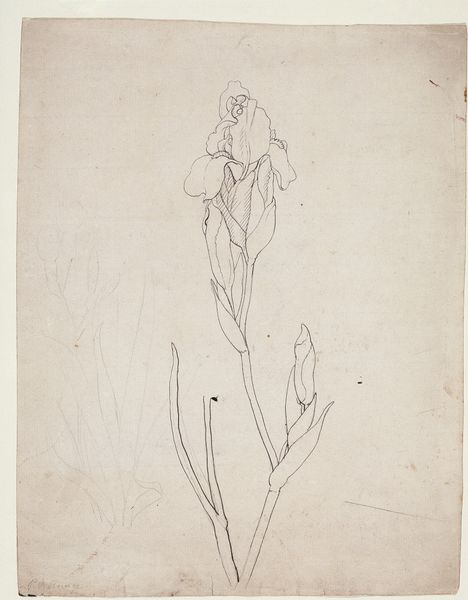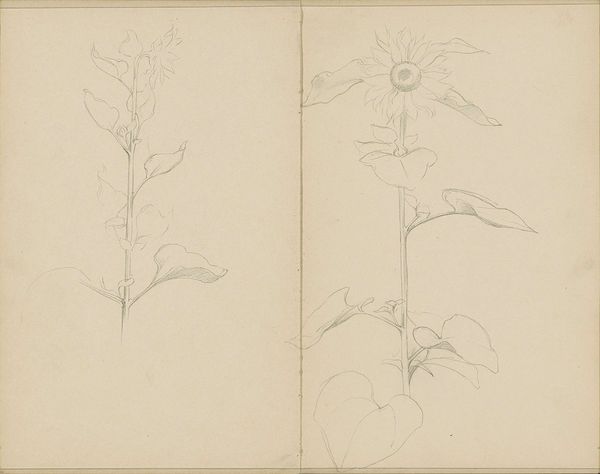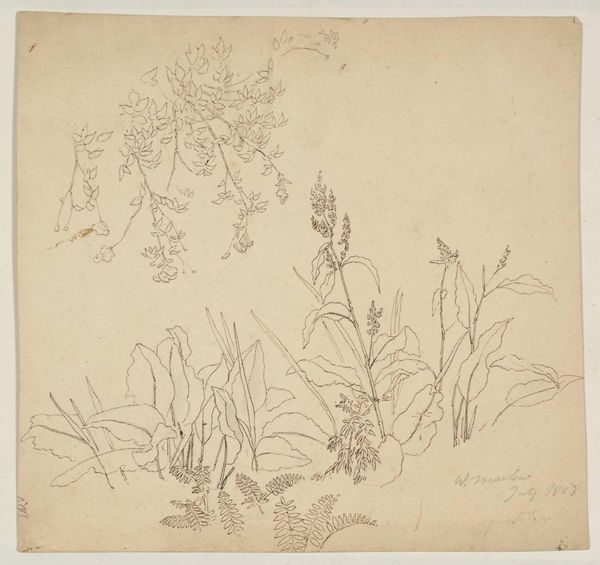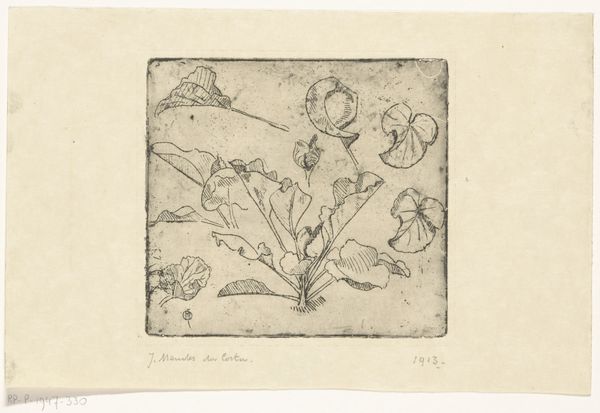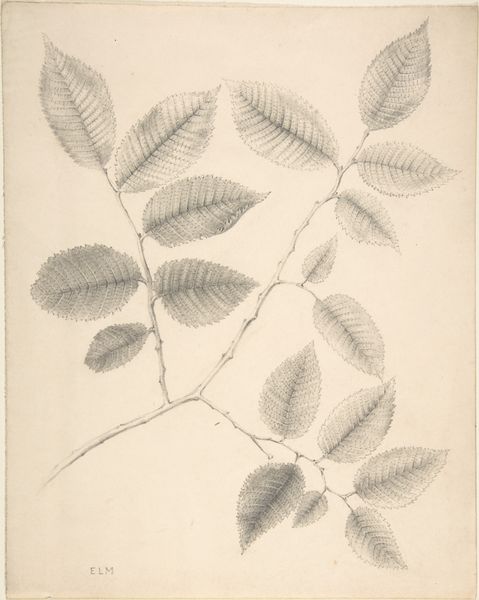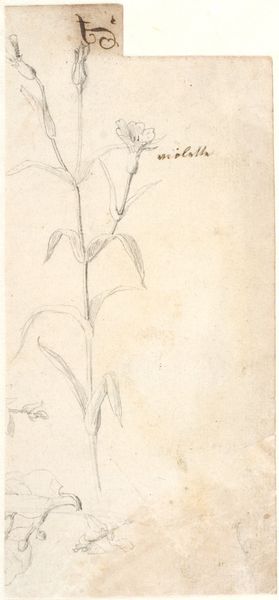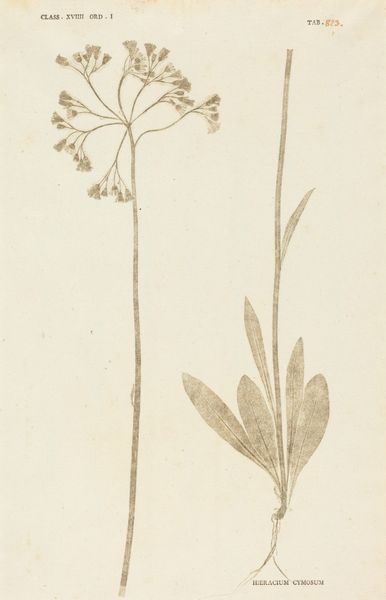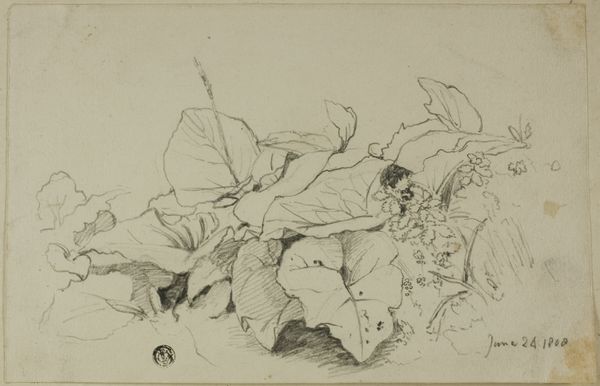
#
toned paper
#
light pencil work
#
pencil sketch
#
incomplete sketchy
#
etching
#
personal sketchbook
#
ink drawing experimentation
#
plant
#
sketchbook drawing
#
watercolour illustration
#
sketchbook art
Dimensions: height 214 mm, width 334 mm
Copyright: Rijks Museum: Open Domain
Editor: This is Antoon Derkinderen’s "Bloeiende klimop en een lelie," created sometime between 1869 and 1925. It looks like a pencil sketch on toned paper, quite delicate and unfinished. I’m struck by its simplicity; what do you see in this piece beyond a simple botanical study? Curator: I see more than just botanical illustration. Think about the historical context: the late 19th and early 20th centuries were a period of rapid industrialization and urbanization. An artist focusing on the natural world in such a delicate manner could be interpreted as a commentary on this shift, a gentle resistance perhaps? Editor: Resistance? How so? Curator: Consider the lily, often a symbol of purity and renewal. The ivy, meanwhile, is resilient and enduring. Derkinderen seems to be positioning nature, particularly feminine coded aspects of it, against the masculine force of industrial progress. Editor: So you are suggesting that these images can tell us something about cultural views on femininity, as connected to nature? Curator: Precisely! It’s an intimate and almost defiant act to dedicate time and attention to these subjects. We could consider who traditionally had the opportunity and time to depict flowers, and what that means for access and gender. What kind of dialogue could this piece begin about who has access to representation? Editor: I never would have considered all of those angles. It's more complex than I thought! Curator: That’s the beauty of art, isn’t it? It reflects the artist and their place in a specific period, inviting us to explore connections between art history, gender and identity.
Comments
No comments
Be the first to comment and join the conversation on the ultimate creative platform.

